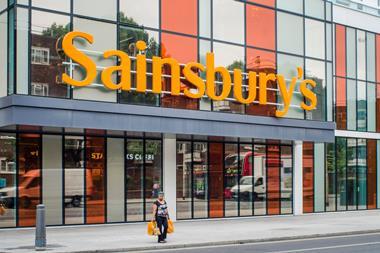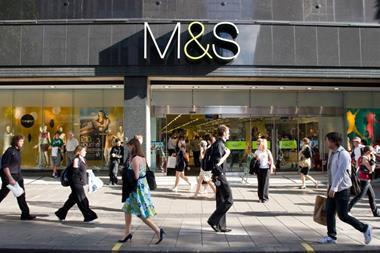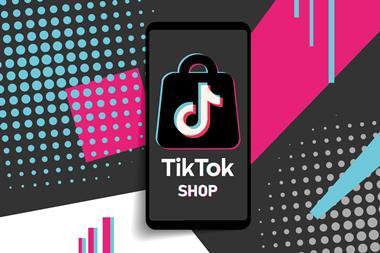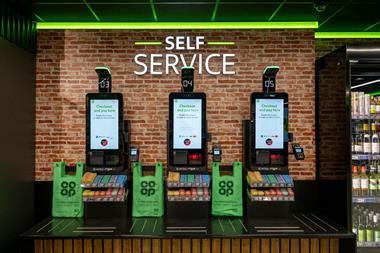Retail transformation projects have a habit of causing disruption and falling short of their goals. Halfway through a radical four-year systems overhaul, how has Morrisons avoided the pitfalls? Tim Danaher speaks to the key players in the biggest transformation project in retail
With Morrisons now established as a national brand, it’s easy to forget the indigestion the company suffered when it swallowed up Safeway. And brilliant grocer that he was, Sir Ken Morrison’s insistence that the Morrisons way was the only way created headaches for the merged business.
Nowhere was this more true than when it came to systems. When the deal happened, the decision had to be made to switch onto a single set of procedures and platforms and the choice was made to go with what Morrisons had.
As finance director Richard Pennycook puts it: “Safeway was on quite sophisticated systems, pretty much all of which went into the bin. Only one Safeway system survived which meant the business went back 10 years, not forwards.”
But with the massive growth in the business that the Safeway deal set it up for, a radical transformation of the systems Morrisons used was essential. And so it embarked on what Morrisons chief information officer Gary Barr describes as “the widest and deepest Oracle implementation in the world”. Today the team heading the biggest systems transformation in UK retail breaks its silence and gives Retail Week an exclusive insight into the project.
Systems overhaul
Barr describes how when he arrived in the business four years ago, he discovered systems that were so old he was amazed they could support a business of Morrisons’ scale. “It was extraordinary how a £15bn company could run with such light touch systems,” he says. “They did what the business historically wanted, but the technology was hugely dated. Some systems were 30 years old. It really wasn’t sustainable”
Incredibly for a business of its size, the production of Morrisons’ monthly accounts still relied heavily on Excel spreadsheets - thousands of them. For a business undergoing dramatic growth and with ambitions to expand into new areas, it simply wasn’t feasible to carry on the same way. “It wouldn’t be able to support many things which the business might want to do,” says Barr.
So the need for change was clear, and as Barr puts it, he found himself “in charge of a £15bn IT start-up”. Every piece of software and hardware is being replaced, with the exception of the till hardware in stores, and that too is being upgraded.
Yet while the scale and scope of the project was the type to get any technology expert salivating, anyone familiar with the history of retail technology knows that it is littered with projects that didn’t do what they were supposed to, took twice as long as intended, overran on cost and in many cases actually got in the way of the business doing the essentials to serve customers during the implementation.
Add into that Morrisons’ uniqueness of character and complexity - most notably its vertically integrated production and manufacturing facilities - and it’s clear that the stakes and complexity were high. But, two years into what is the biggest technological overhaul of a UK retailer taking place today, Morrisons and its IT services partner Wipro are confident that the project is on course and delivering real benefits to the business.
The scope of what Morrisons is doing is huge, delivering a whole new operating model encompassing all financial systems, planning, forecasting, the distribution systems and the stores, as well as its vertically integrated manufacturing operations.
Underpinning the project is a fundamental principle that the new systems have to support and reinforce the unique aspects of Morrisons. At the start of the project a key task was to determine areas of the business where it was important to develop solutions that were Morrisons-specific in order to preserve and further develop those points of difference, such as its vertical integration and Market Street, as well as areas where all that was needed was to catch up with industry standards.
“We looked at 100 or so cross-business processes and decided on those areas that we believe we operate differently to the rest of the retail industry but which contribute to the uniqueness of Morrisons and give us a competitive advantage and therefore we might want to modify Oracle,” says Morrisons programme director Phil Goodwin. “Elsewhere we want to be at least as good as everyone else, so we want the vanilla solution or as close to it as possible.”
Learning from mistakes
There was another vital thing to do before work started, which was to take what Pennycook describes as a “really good hard look” at the problems other retailers had encountered when undertaking transformation projects on a similar scale. Pennycook says the project team examined what had gone wrong with other retailers’ systems implementations, and that one crucial lesson emerged above all others: “You can’t outsource the risk”.
What that means is that while inevitably there are numerous third parties working on the project, ultimate accountability remains within the business, and the company has built a large internal capability to work on the project alongside the technology partners. Pennycook is the project sponsor at board level and, as he puts it: “Ultimate accountability rests firmly with us. I sit in front of shareholders saying we’re going to deliver this.”
Having chosen Oracle as the platform that would underpin the business, Morrisons needed to choose an IT partner to implement the project and support the core objective of delivering planning, management and delivery of the transformation of Morrisons’ systems and processes.
A shortlist of three was chosen made up of Wipro, IBM and Oracle itself. Those on the shortlist were tried out by going through the planning and scoping with all three of the systems integrators before the final decision was made.
“It enabled us to get a really good look at all of them and how they would work with Oracle,” said Goodwin. The ability to demonstrate flexibility was key to Wipro - which led the work streams around manufacturing, testing and business intelligence/data warehousing during the scoping phase - emerging as winner.
“One of the key things was the flexibility it had shown through the planning and scoping phase,” says Goodwin, “which is vital because the shape of the programme at the start is never going to be the shape at the end of the project.”
Sticking together
A programme board was formed involving both Wipro and Oracle as well as the retailer, and with the exception of chief executive Dalton Philips, all the Morrisons board have been heavily involved with the project. “We have tried to engineer that Morrisons success is Wipro and Oracle’s success,” says Barr. “I can’t conceive of a situation where Morrisons is successful and Wipro and Oracle haven’t been.” Although there are about 500 people in the project team, the heads of individual areas such as supply chain or manufacturing are always involved in any part of the project that affects their part of the business.
That’s not to say that there aren’t the occasional issues you would expect with a project of this size. “There’s been the odd falling out with the suppliers over the past three years but we’ve always got round a table to discuss it,” Barr says. Morrisons people are now embedded in the Wipro teams on the ground, deliberately avoiding a “them and us” approach.
Wipro general manager Mike Davies says the level of senior involvement from Morrisons’ board helps ensure the project team always knows exactly what the business is thinking.
“It’s great how involved the board are,” he says. “It’s not all about commercial success, there’s a lot of pride at stake here and the whole team works well together.”
So two years into the project, what’s been achieved? The entire network has been replaced with a new wide area network, and new systems such as voice picking - which has gone into the ambient and frozen warehouses - are being put into the business, which are making a real difference to how people in the company work.
Half of the estate now has the new Retalix point-of-sale system, and customers are being processed much more quickly through the tills, and 115,000 Morrisons employees have been moved onto the new payroll system. Self-checkout, ironically used in the past by Safeway, has been introduced to Morrisons in a way which is easily compatible with the new systems.
Moving quickly and staying close to the business has been key. “We didn’t want to go into an ivory tower for three years, come back and the business has changed,” says Goodwin. “It was vital to anchor the programme in the business.” At the same time, it’s been vital not to disrupt the day-to-day operation of the business and Barr say that has been achieved.
Big benefits
Communicating what the programme means to the business has also been vital. Goodwin gives the example of voice picking in the warehouse, where he says there have been big benefits in terms of efficiency and pick accuracy. “Operators really like the technology,” he says, adding that the benefits have exceeded the forecasts made already.
Pennycook sees big benefits in having one platform underpinning the whole business, and believes it will reinforce the Morrisons’ uniqueness. Asked to identify the single biggest benefit of the programme, he says he is particularly excited that it will reinforce the retailer’s vertical integration by having Oracle running through all Morrisons’ manufacturing operations.
The new platform should also support Philips’s plans to extend the business into new areas. The grocer is going to trial convenience stores and test selling online, something which would have been a huge challenge using legacy systems. And it will also make the business more efficient, with Oracle’s software taking over functions traditionally done manually and freeing Morrisons staff to concentrate on value-added tasks.
The project is two years in and has two years to go, and Barr is happy with progress so far. “There’s not one big decision we have made in the past two or three years which we regret,” he says. In two years, Pennycook says, while there will always be more to do, the transformation project as originally set out will be complete and new operating model fully deployed.
Retail transformation projects have a track record of not delivering what they promised and disrupting businesses.
But by learning the lessons of its rivals’ mistakes and keeping ownership of the project while fully engaging its partners, Morrisons seems on track to emerge from the venture with systems that will move it out of the technological dark ages and will support its future plans.
Morrisons’ team
Enterprise Software Oracle
Implementation/System Integration Partner Wipro
Voice Picking Solution Zetes
IT Hardware HP
EPoS (including petrol and self-checkout) Retalix, Wincor, HTEC
Labour Planning Oracle/KSA


























No comments yet